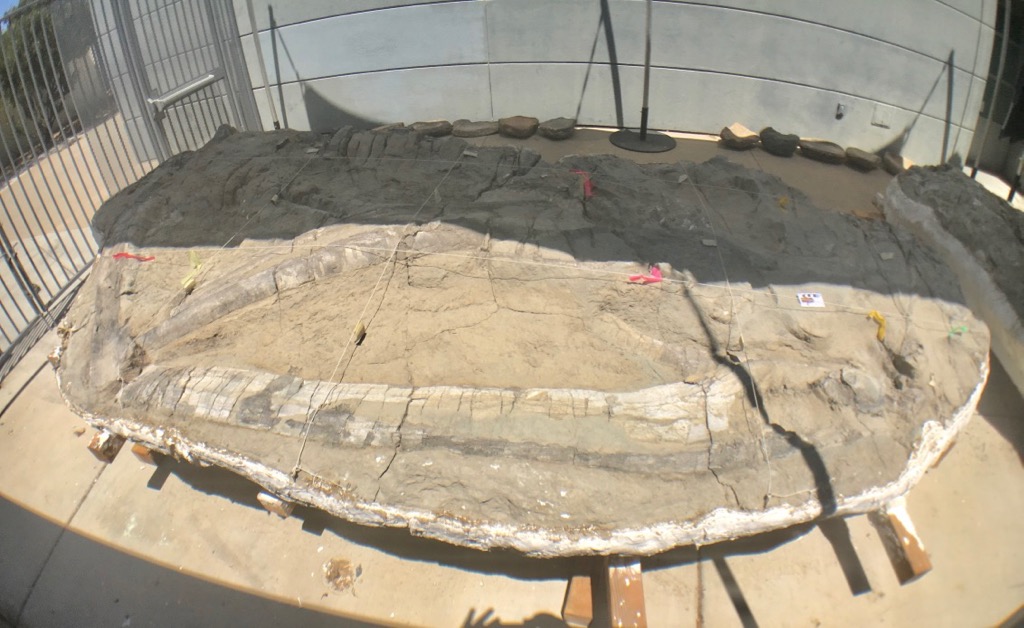 Last summer we took delivery of Mystic, a Pliocene baleen whale from Santa Cruz County. It will take us years to fully prepare Mystic, but we have started working on it, and we've made some interesting progress.Back in July, I tentatively identified Mystic as a possible member of the right whale family (the Balaenidae), based on its large size, the arched rostrum (upper jaw), and the lack of a coronoid process on the mandible. Below is a skeleton of the modern bowhead whale, Balaena mysticetus, showing those features (photo from the Royal Belgian Institute of Natural Sciences, taken by Nick Fraser):
Last summer we took delivery of Mystic, a Pliocene baleen whale from Santa Cruz County. It will take us years to fully prepare Mystic, but we have started working on it, and we've made some interesting progress.Back in July, I tentatively identified Mystic as a possible member of the right whale family (the Balaenidae), based on its large size, the arched rostrum (upper jaw), and the lack of a coronoid process on the mandible. Below is a skeleton of the modern bowhead whale, Balaena mysticetus, showing those features (photo from the Royal Belgian Institute of Natural Sciences, taken by Nick Fraser):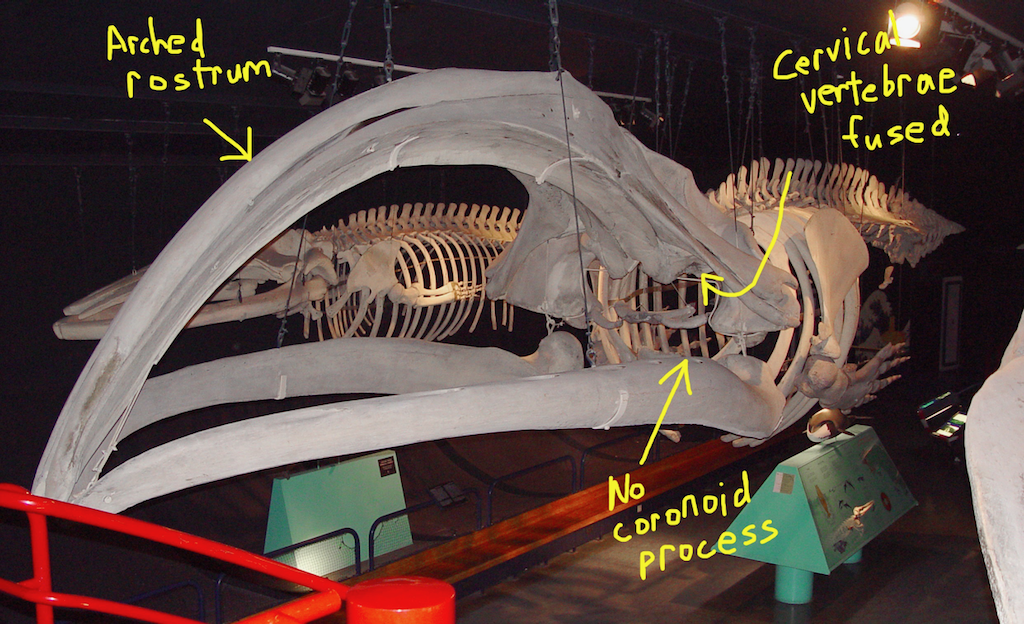 The fused cervical vertebrae are not visible in the photo above, but an interesting feature of balaenids is that all seven neck vertebrae are fused in both modern genera at a very young age, and the first six are fused in the only fossil genus with a known vertebral column, Balaenula (example below from the Pliocene of Virginia, at the North Carolina Museum of Natural Sciences):
The fused cervical vertebrae are not visible in the photo above, but an interesting feature of balaenids is that all seven neck vertebrae are fused in both modern genera at a very young age, and the first six are fused in the only fossil genus with a known vertebral column, Balaenula (example below from the Pliocene of Virginia, at the North Carolina Museum of Natural Sciences):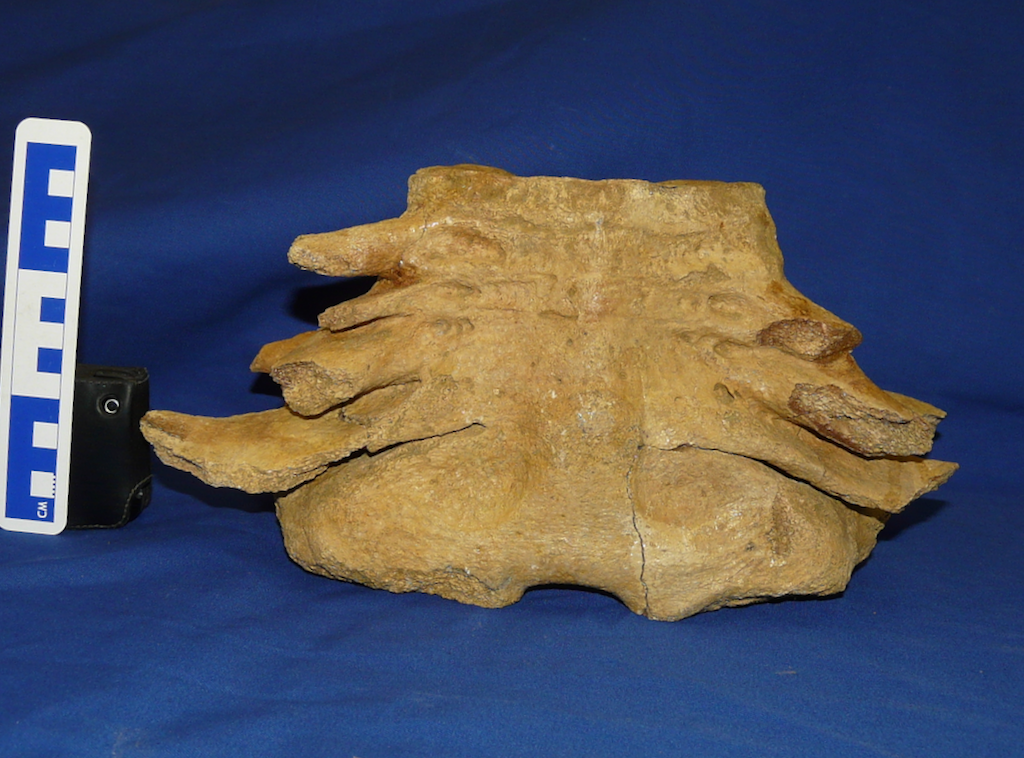 In recent weeks, we've been working around the back of Mystic's head, and noticed a series of vertebrae (after the photo is a version with the vertebrae circled):
In recent weeks, we've been working around the back of Mystic's head, and noticed a series of vertebrae (after the photo is a version with the vertebrae circled):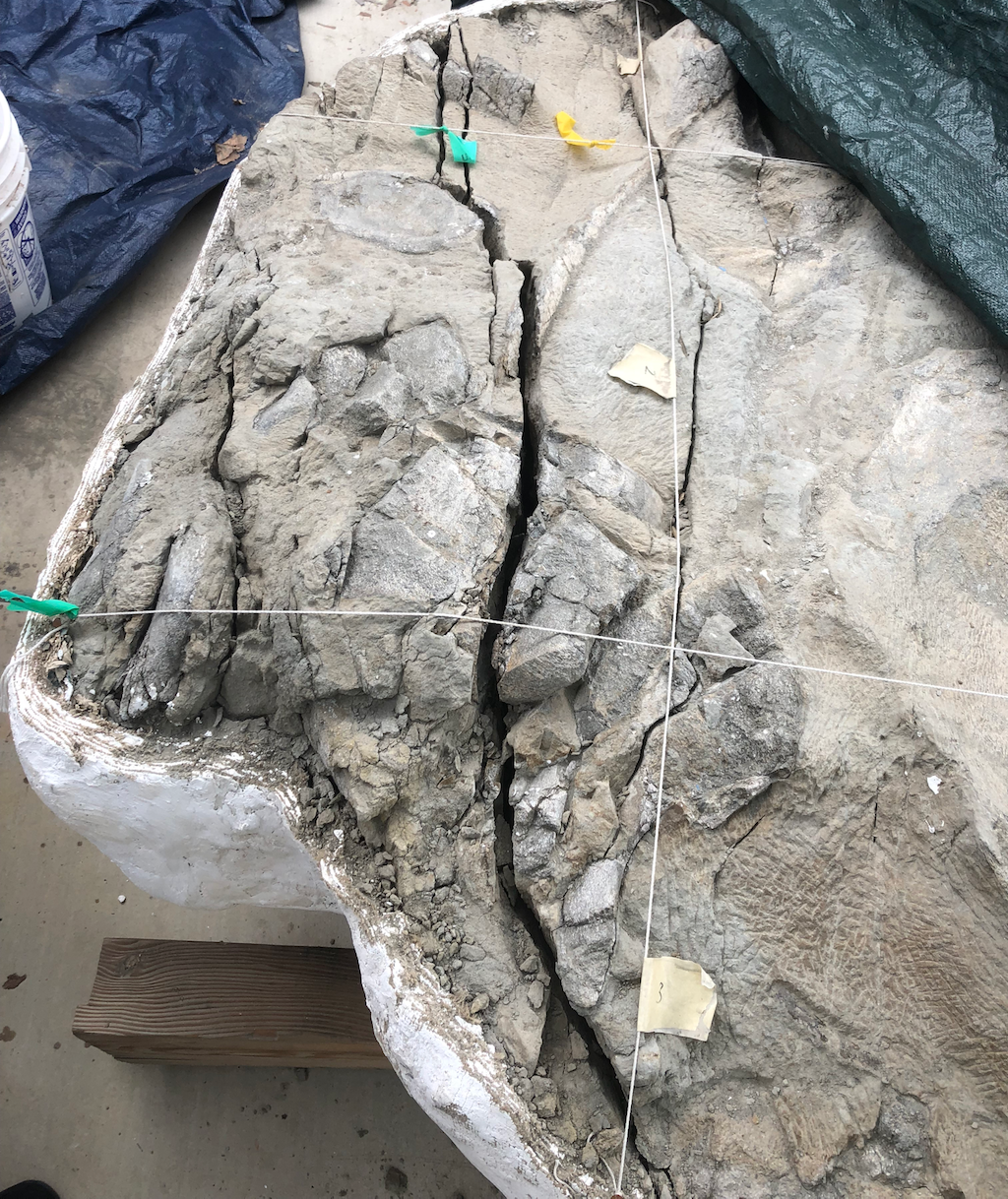
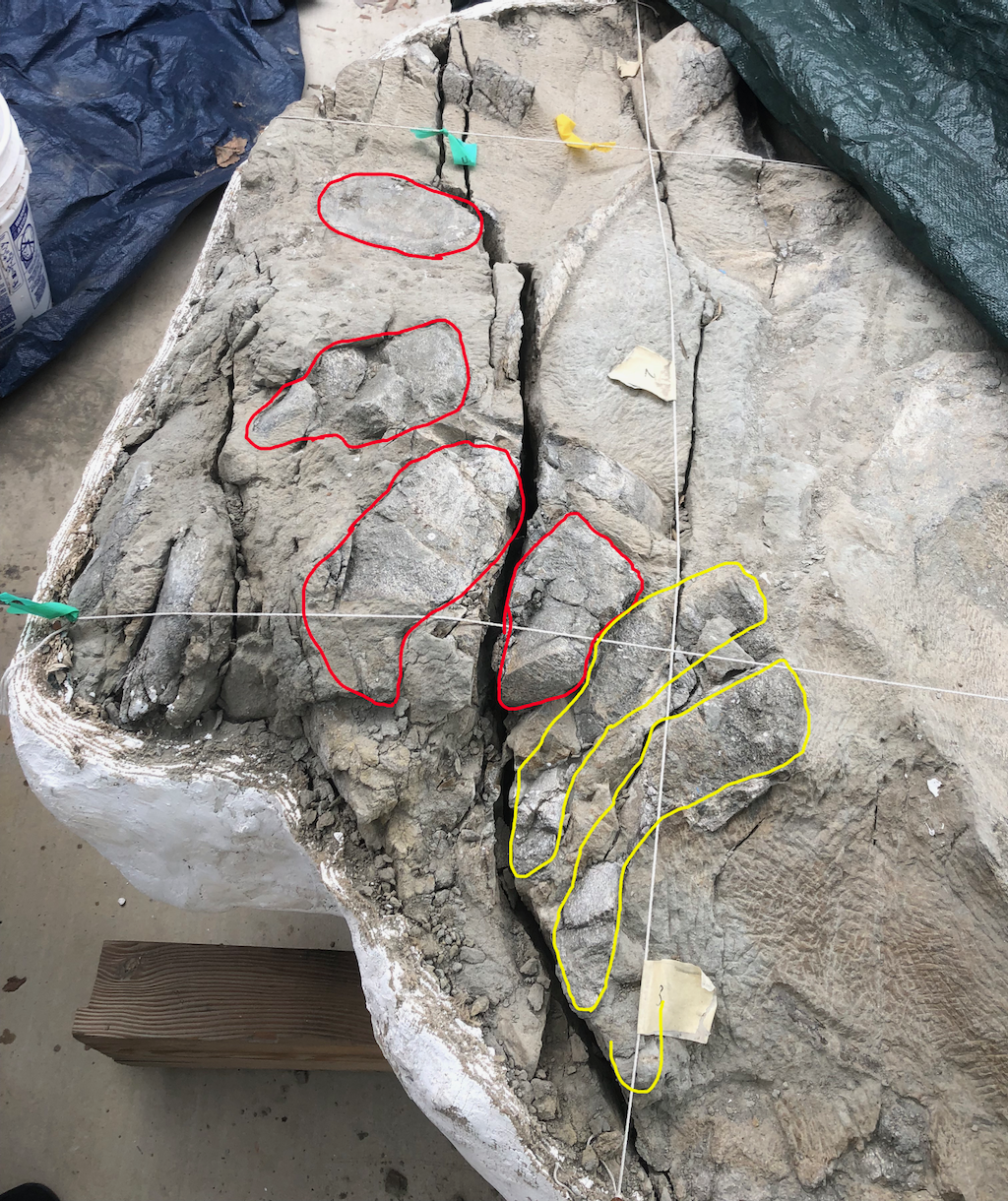 Most of these vertebrae are articulated, or nearly so. But the ones in yellow are of particular interest. They have transverse processes with no obvious rib articulations, and the vertebral centra are very short. That makes them look like cervical vertebrae, but they aren't fused. As mentioned above, all known members of the right whale family have fused cervicals. So, do we have other options?Balaenopterids (blue whales, humpback whales, and their relatives) have unfused cervical vertebrae, but their rostra are only slightly arched, and, more significantly, they all have very large, prominent coronoid processes (fin whale Balaenoptera physalis below from the Los Angeles County Museum):
Most of these vertebrae are articulated, or nearly so. But the ones in yellow are of particular interest. They have transverse processes with no obvious rib articulations, and the vertebral centra are very short. That makes them look like cervical vertebrae, but they aren't fused. As mentioned above, all known members of the right whale family have fused cervicals. So, do we have other options?Balaenopterids (blue whales, humpback whales, and their relatives) have unfused cervical vertebrae, but their rostra are only slightly arched, and, more significantly, they all have very large, prominent coronoid processes (fin whale Balaenoptera physalis below from the Los Angeles County Museum):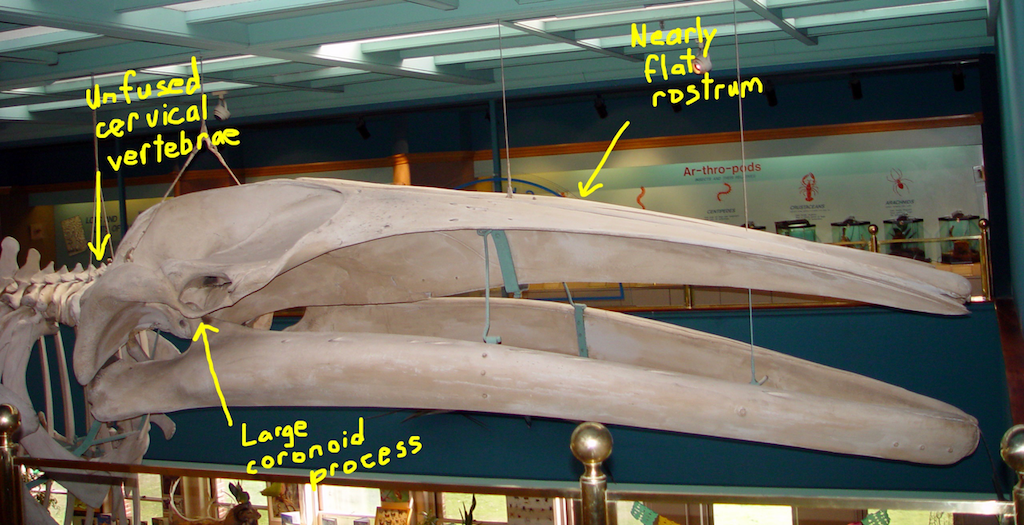 However, there are also gray whales (example below from the Monterey Bay Aquarium):
However, there are also gray whales (example below from the Monterey Bay Aquarium):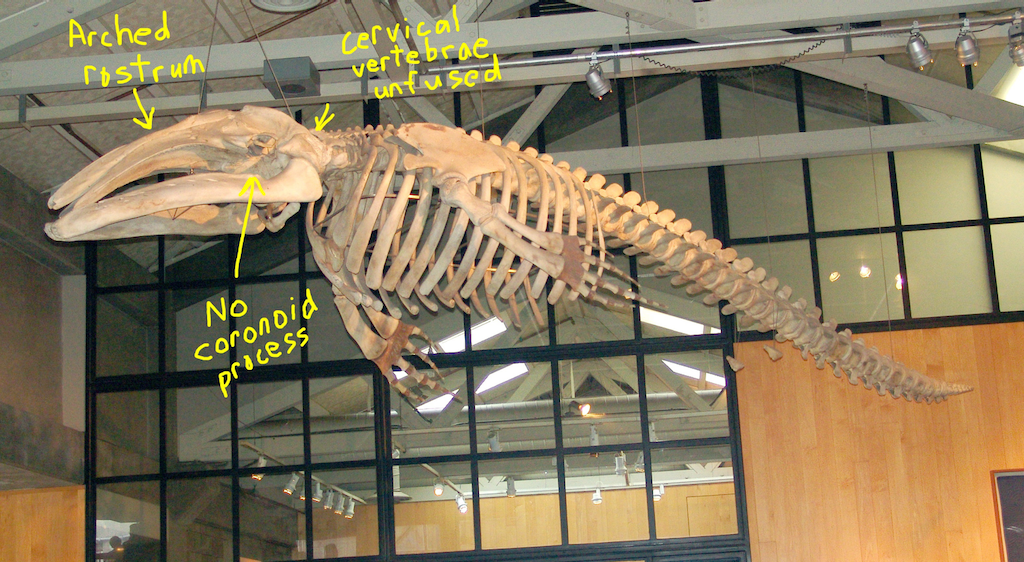 Like balaenopterids (and, in fact, all mysticetes except the right whales), gray whales have unfused cervical vertebrae. But, like right whales, they have an arched rostrum (although not as arched as in the right whales) and lack a coronoid process.If we're interpreting Mystic's features correctly, I now think there's a good chance it could be a gray whale instead of a right whale. There have been other fossil gray whales found in Pliocene deposits from California, especially from the San Diego Formation, but they don't seem to be terribly common, so this would still be a great find.Stay tuned for more over the next five years or so!
Like balaenopterids (and, in fact, all mysticetes except the right whales), gray whales have unfused cervical vertebrae. But, like right whales, they have an arched rostrum (although not as arched as in the right whales) and lack a coronoid process.If we're interpreting Mystic's features correctly, I now think there's a good chance it could be a gray whale instead of a right whale. There have been other fossil gray whales found in Pliocene deposits from California, especially from the San Diego Formation, but they don't seem to be terribly common, so this would still be a great find.Stay tuned for more over the next five years or so!
